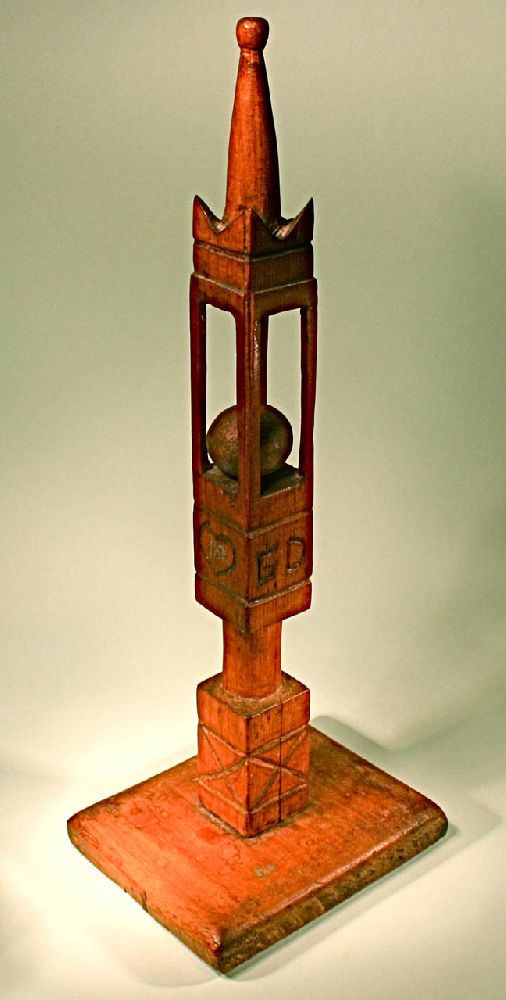

Title: Antique folk art wooden ship art carved whittling of a ball-in-cage
Shipping: $39.00
Artist: N/A
Period: 19th Century
History: N/A
Origin: North America > United States
Condition: Museum Quality
Item Date: 1811
Item ID: 2341
This is ship Folk Art and a striking carved large assemblage which incorporates a ball-in-cage it is fun and whimsey. It has now oxidized nicely. Dated 1811. This is a self-taught sculptor, of a antique carved floating ball within a cage. This artist through trial and error he learned the dos and don'ts of wood carving and whittling wood. The most common comments I receive when I show these old carved ball-in-cages. Is “How did they get that ball in there?” Whittling a sharp point on a stick can be very satisfying and I think it appeals to an instinct that extends back to an ancient tool-making past when a sharp stick may have been critical for survival. In the past you learned to work with your hands early on because there was just a lot of work to go around in everyday life, the carving skill was needed for survival. it was amazing what someone back then could do with a pocket knife, with a lot of time on there hands! Men on a ship needed something to do when sitting around for days on end so they would carve. This was so they would not go "crazy" sitting-round all day with nothing to do. The whittling of the ball and cage does not require any great artistic talent. Just about anyone can learn to carve one. The main ingredients are some good, straight-grained carving wood, a sharp knife, and lots and lots of patience. And it’s the third requirement that is often lacking and leads to lack of success. The important thing to remember is that the process of carving can be just as rewarding as seeing the product. If it feels like work, then you probably don’t have the makin’s of a good whittler. Whittling is a time for focused relaxation, where you can enjoy the feel of carving wood and the sounds of a sharp knife at work. It’s about as good a therapy to counteract the rat race of the world on a ship.
Link: http://en.wikipedia.org/wiki/Wood_carving
Wood carving is a form of working wood by means of a cutting tool held in the hand (this may be a power tool), resulting in a wooden figure or figurine (this may be abstract in nature) or in the sculptural ornamentation of a wooden object. The phrase may also refer to the finished product, from individual sculptures, to hand-worked mouldings composing part of a tracery. Some of the finest extant examples of early wood carving are from the Middle Ages in Italy and France,[citation needed] where the typical themes of that era were Christian iconography. In England many complete examples remain from the 16th and 17th century, where oak was the preferred medium. Figural carving seems to have been widespread. The carving to represent one's god in a tangible form finds expression in numberless ways. The early carver, and, for that matter, the native of the present day, has found a difficulty in giving expression to the eye, and at times has evaded it by inlaying this feature with colored material.